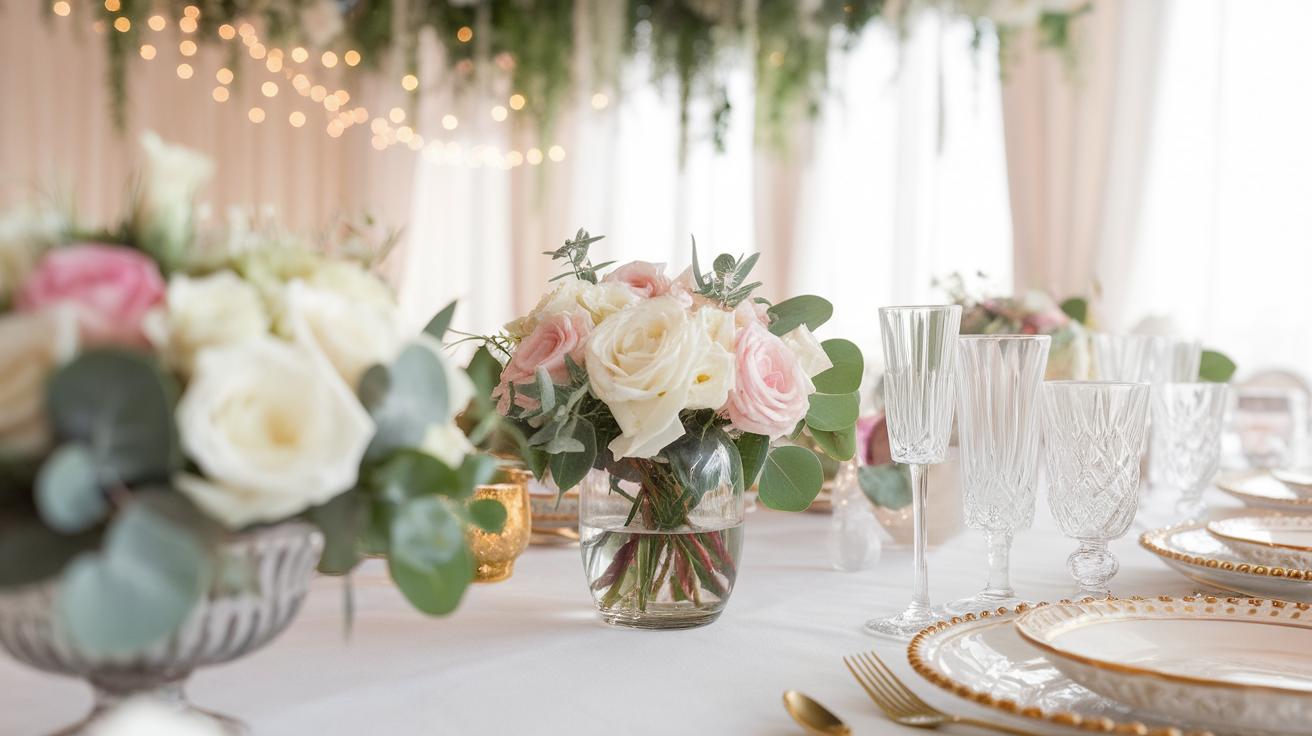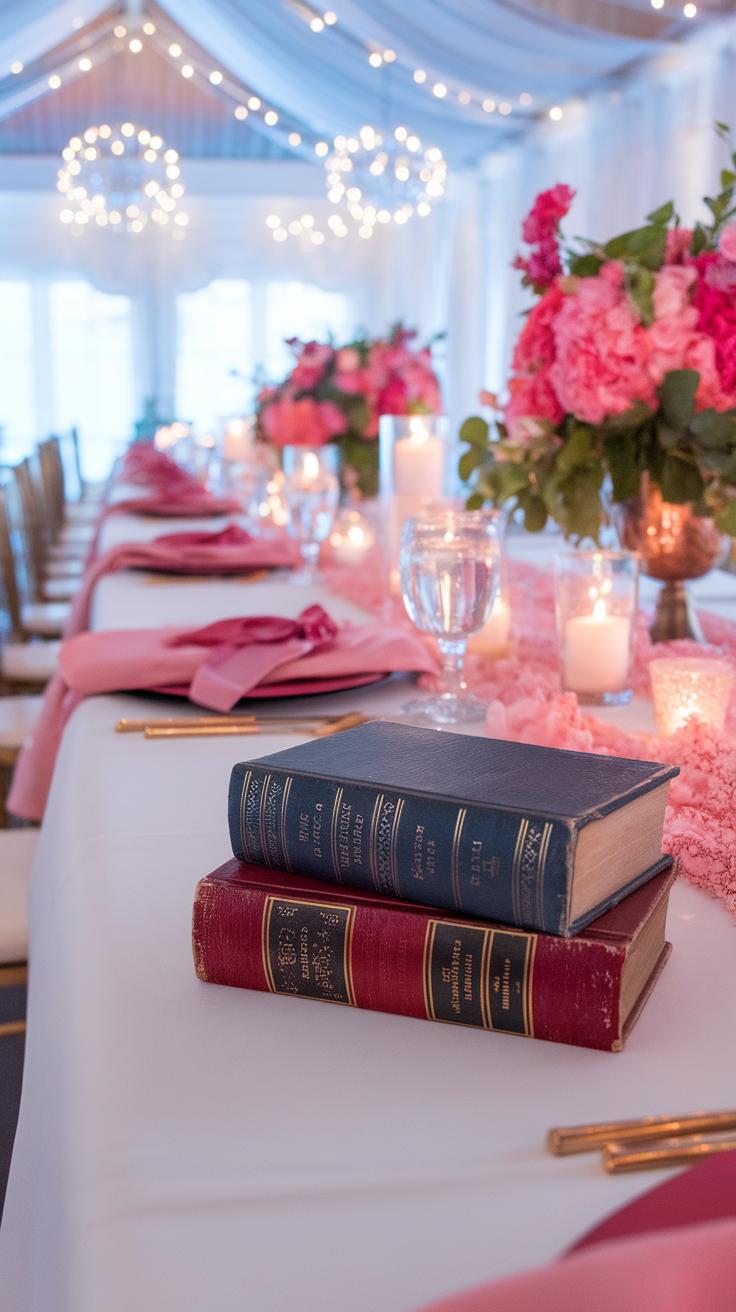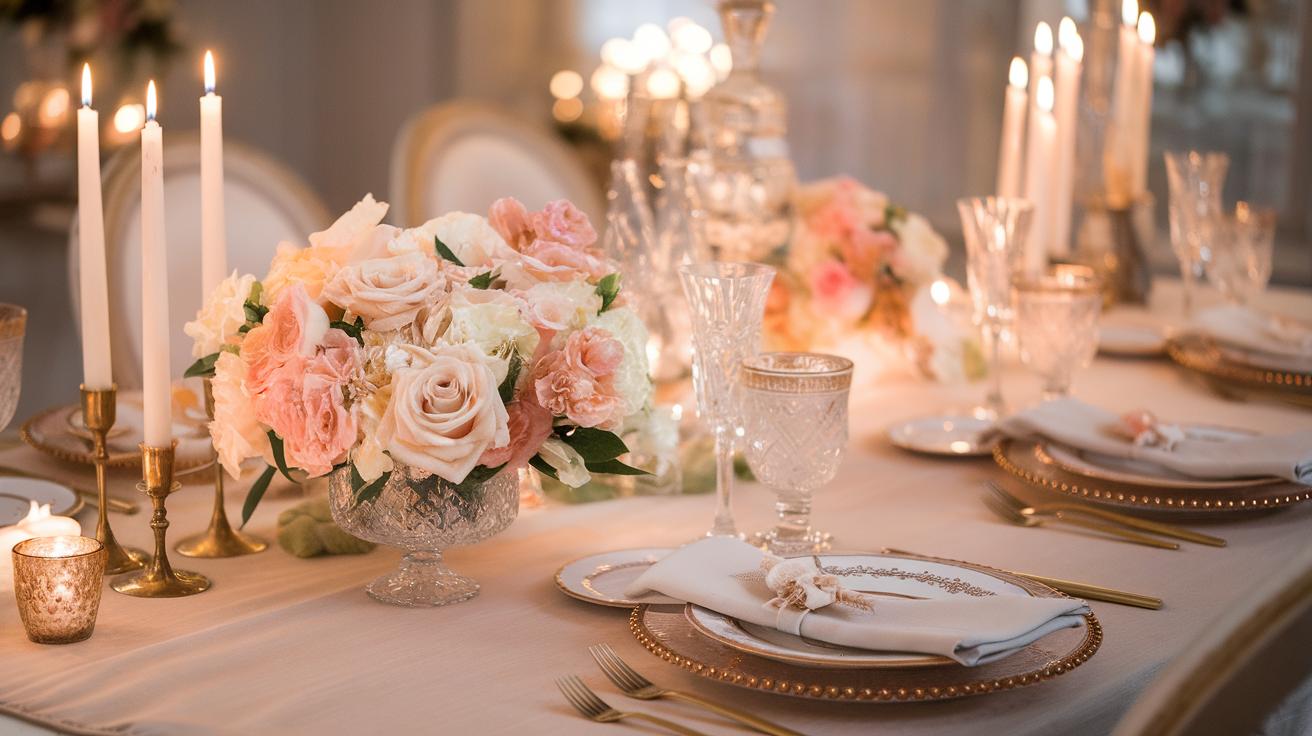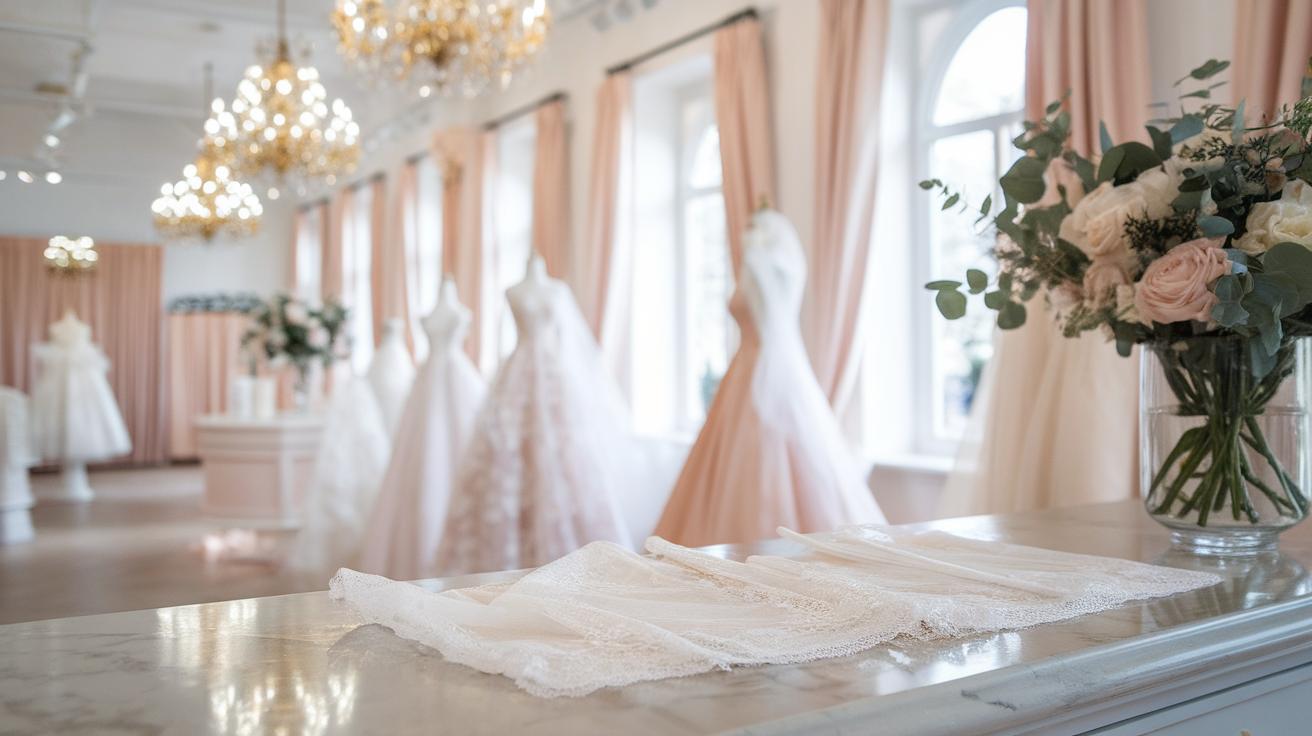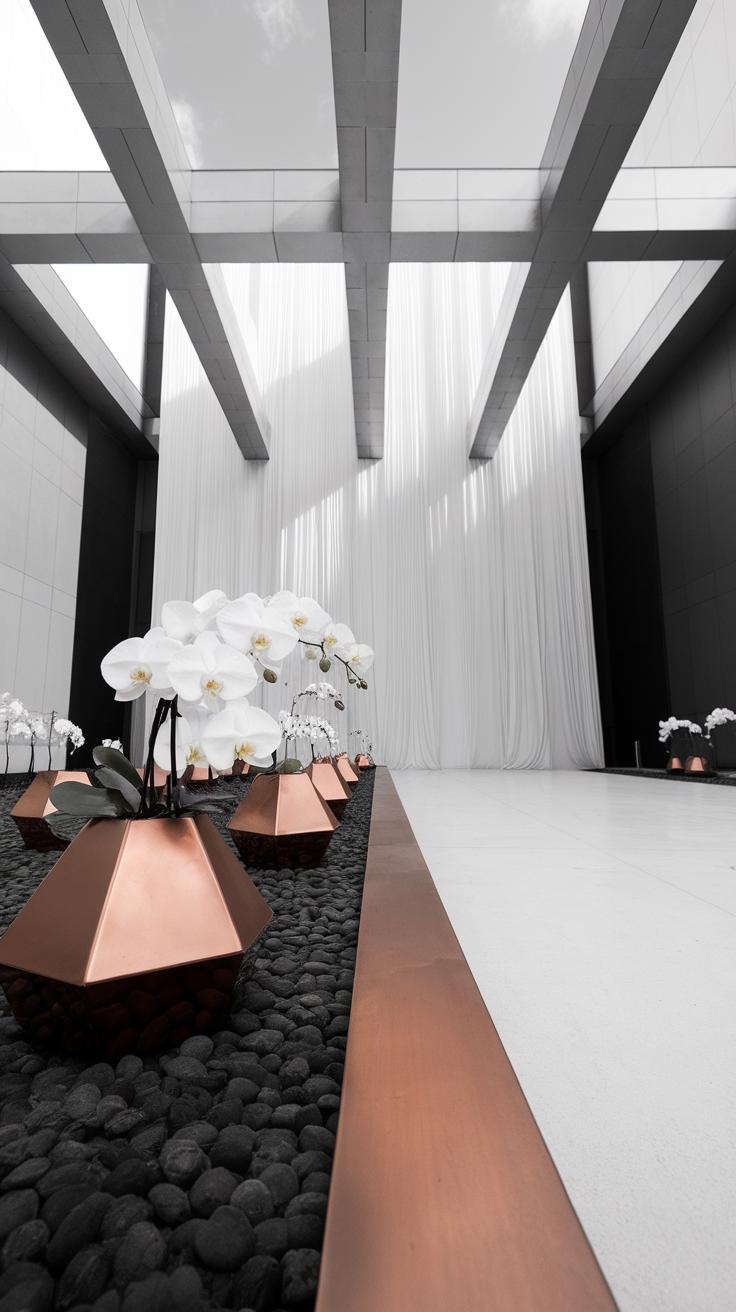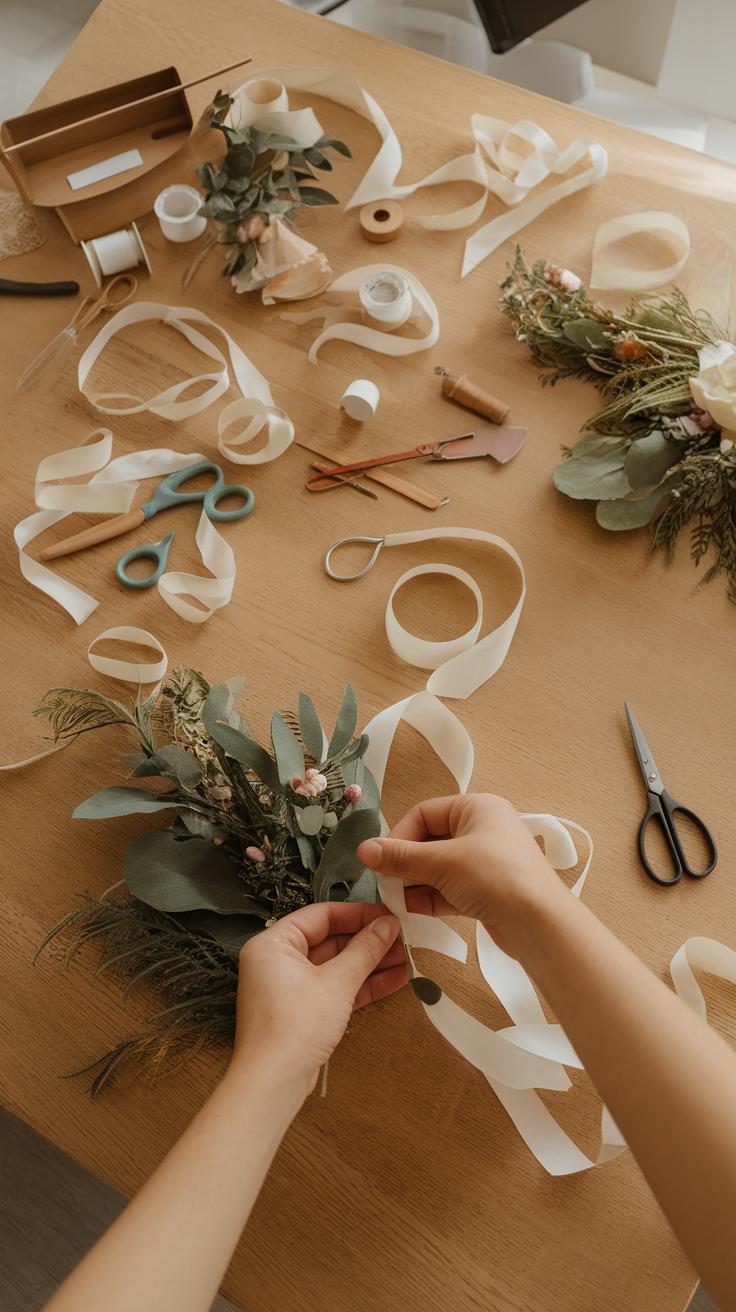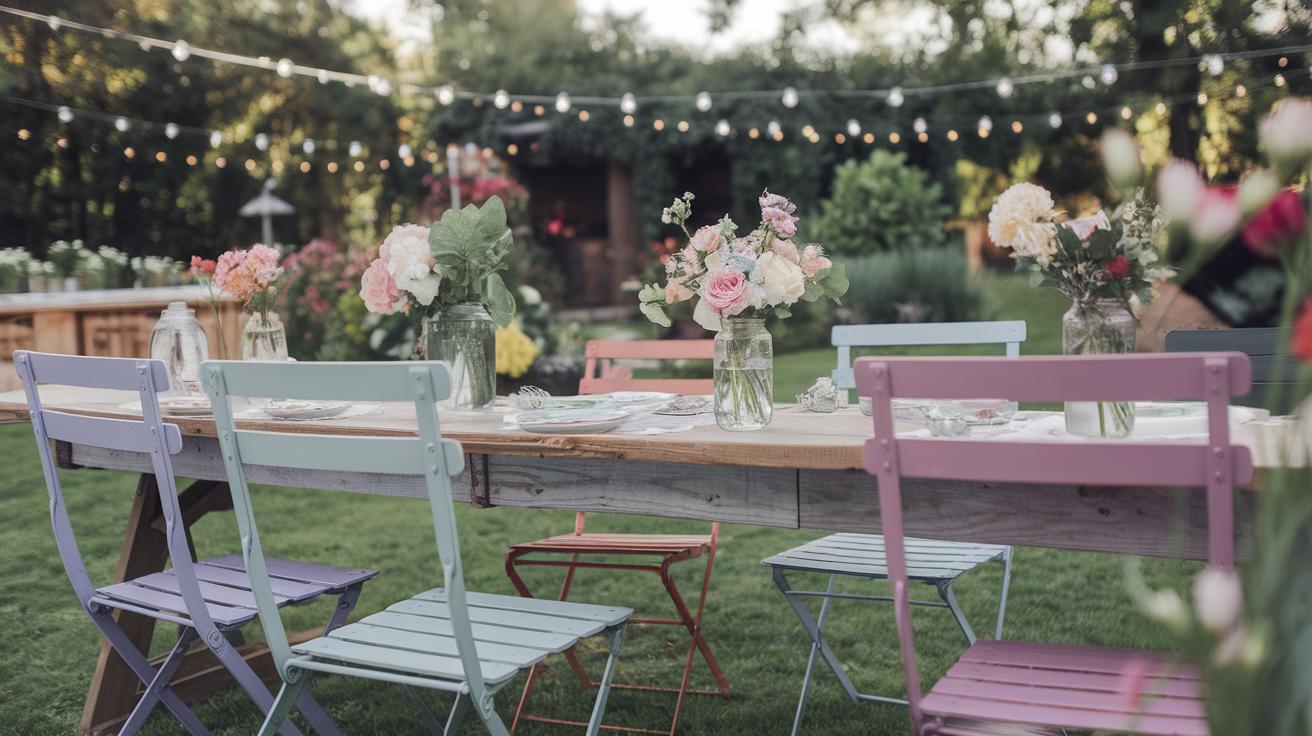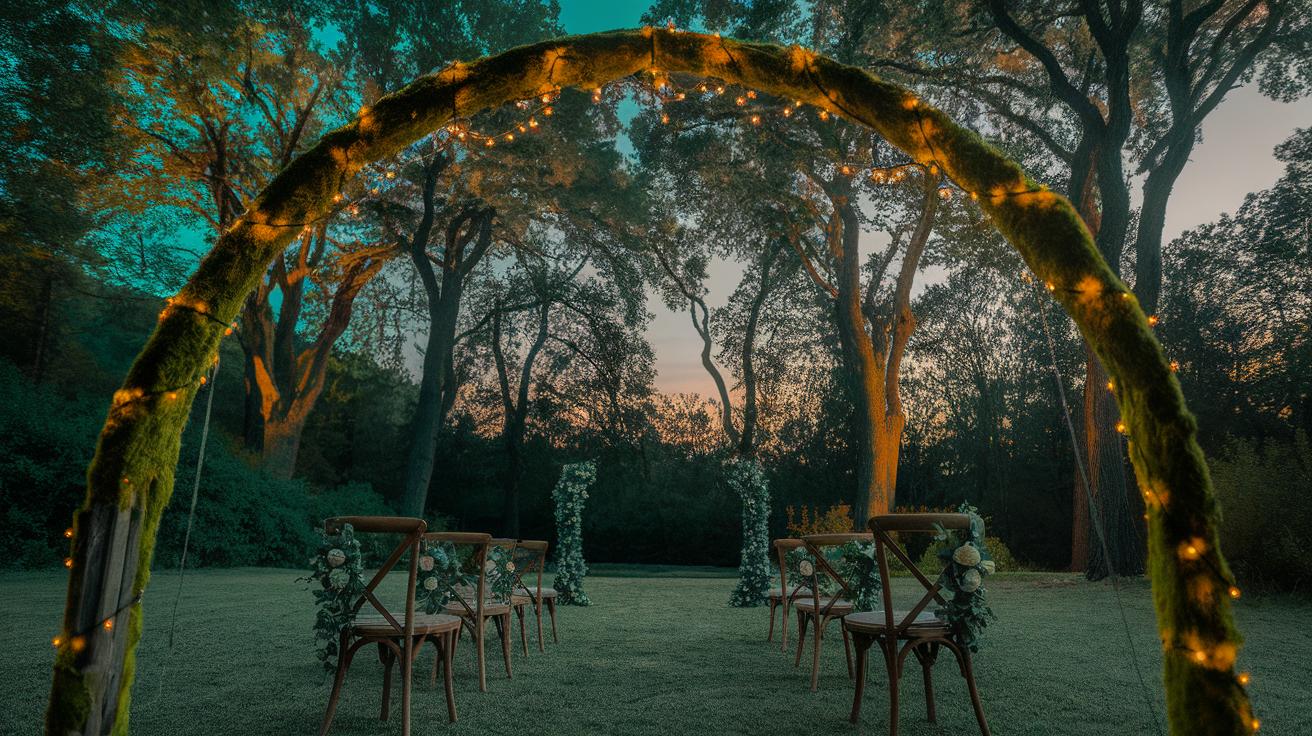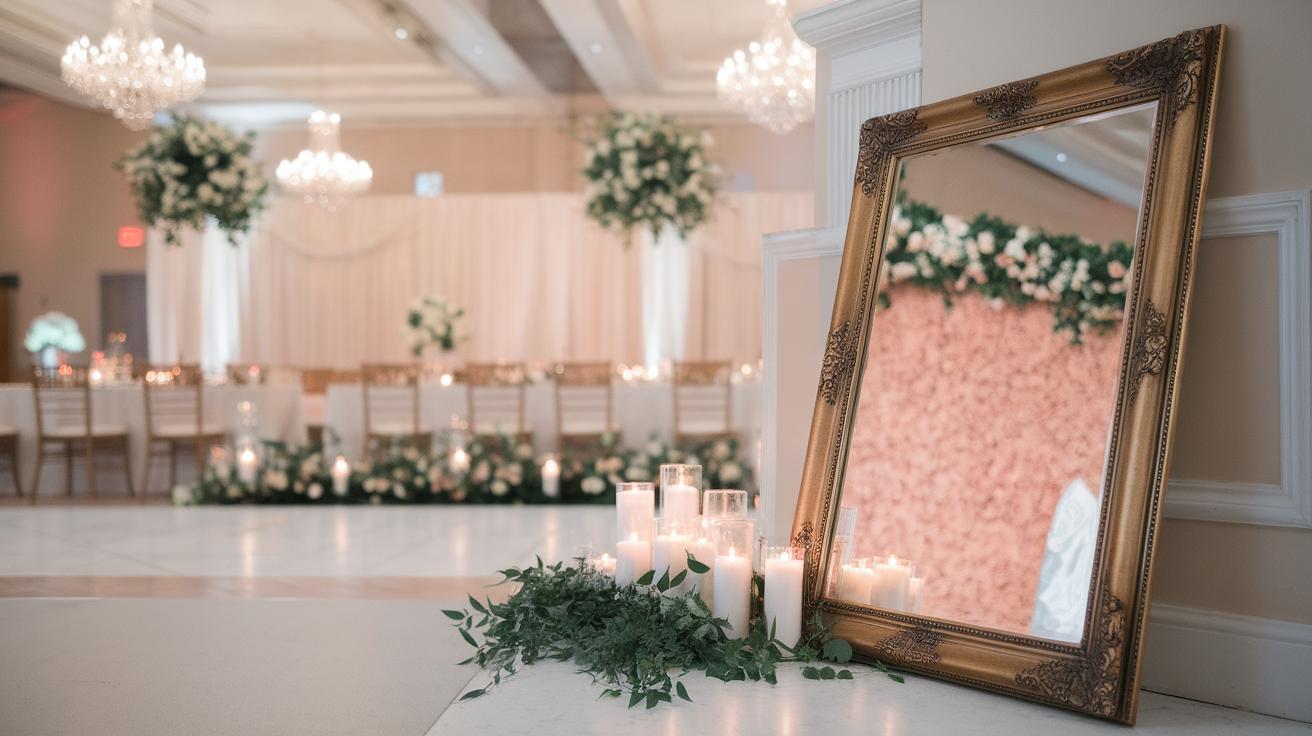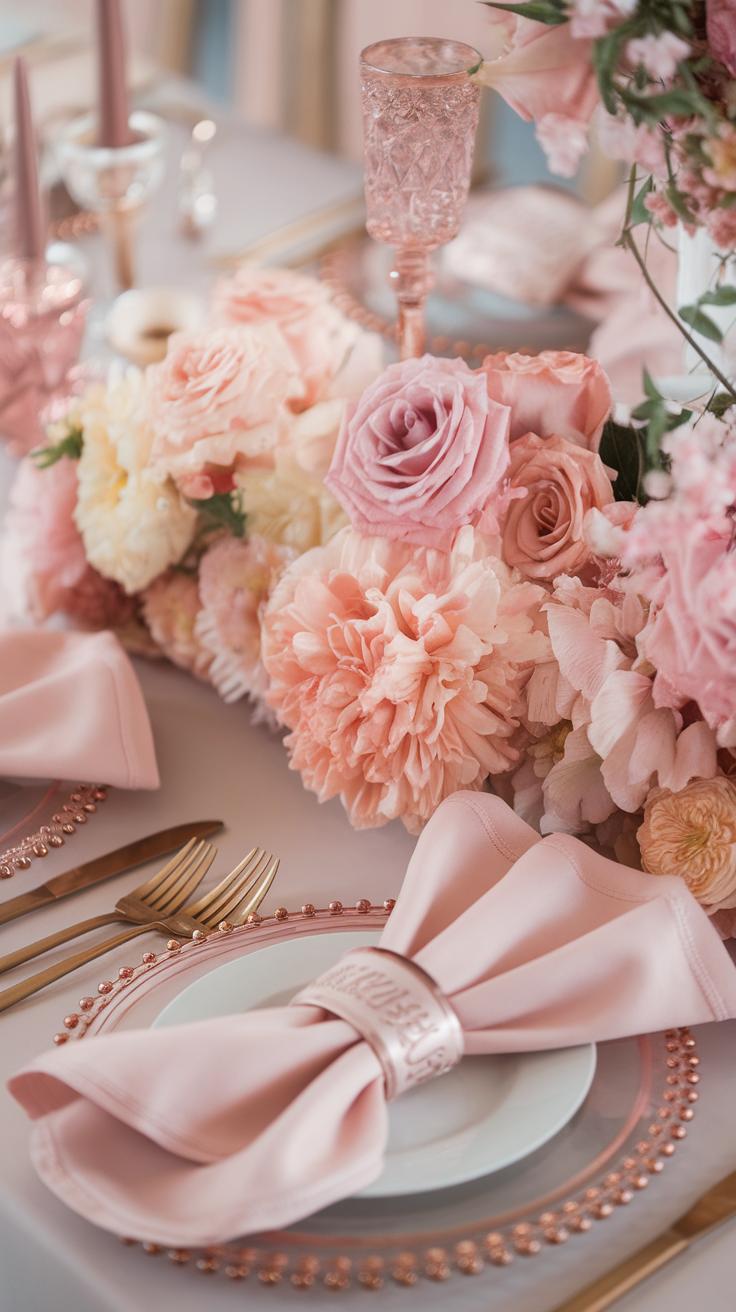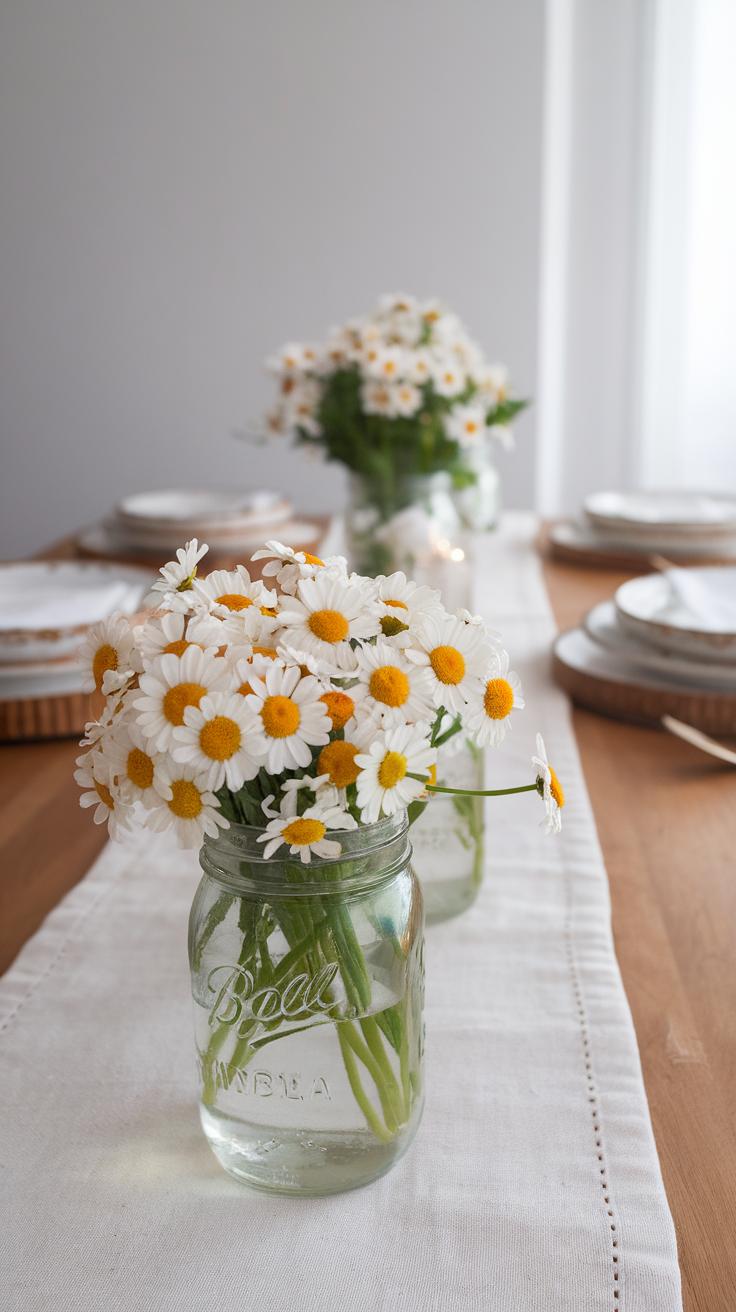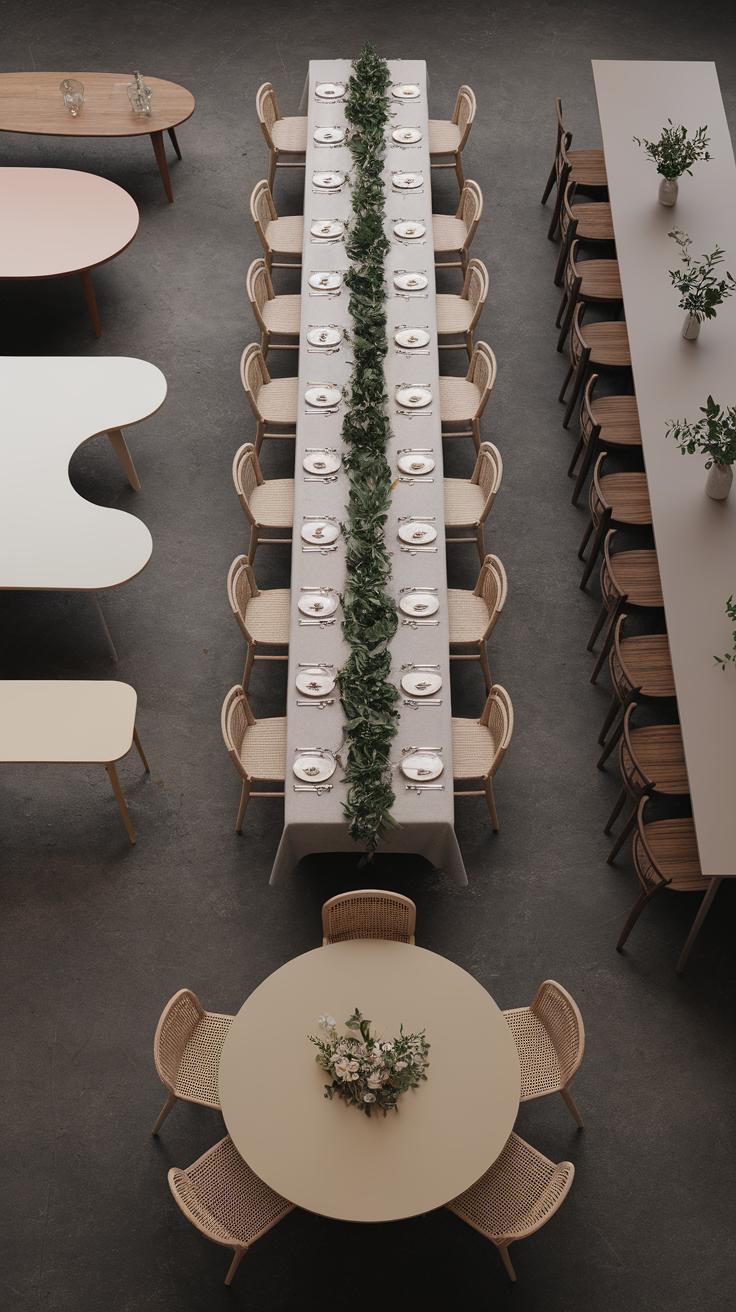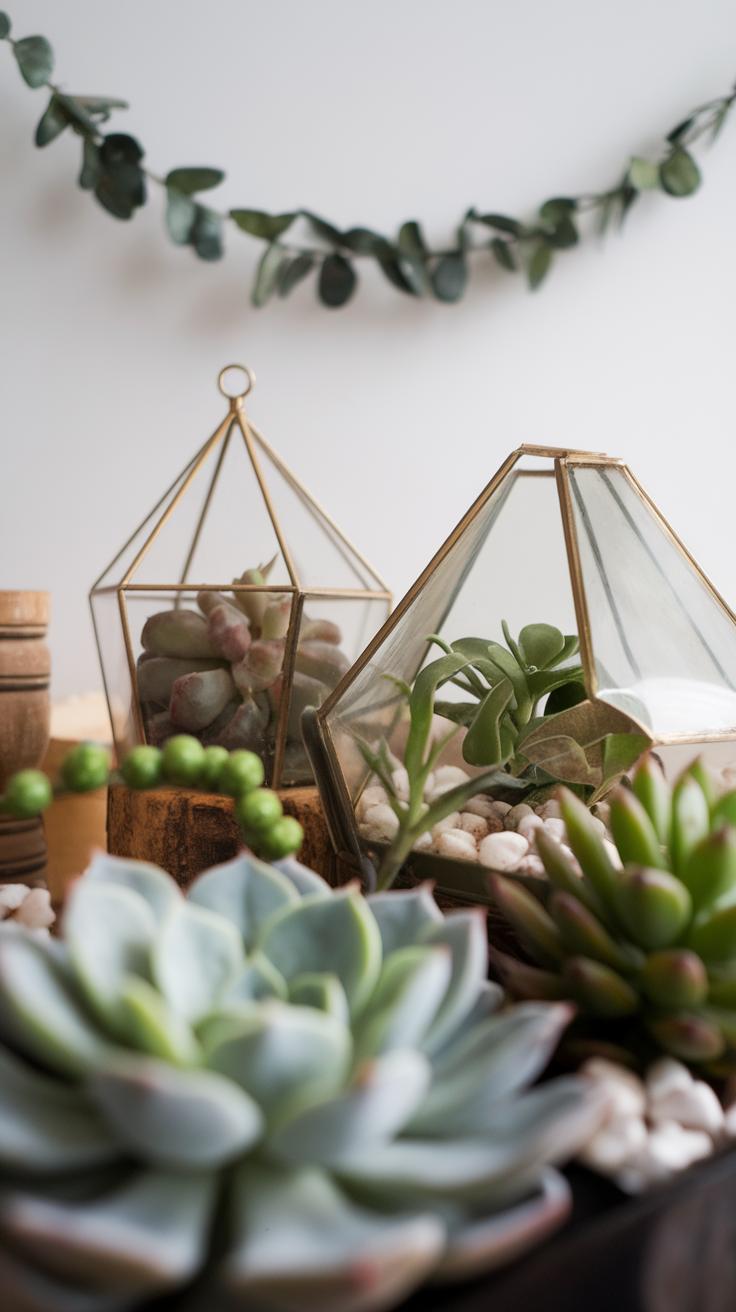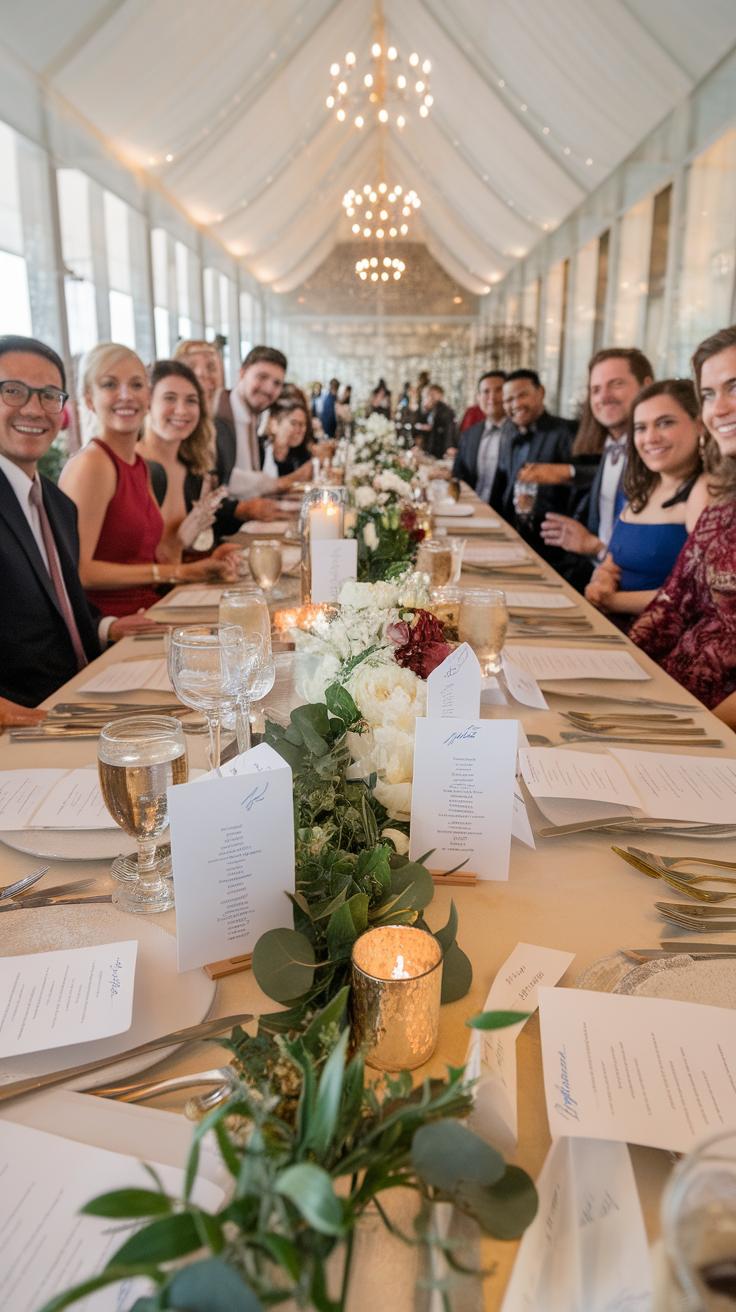Introduction
Your wedding day deserves attention to detail, especially when it comes to your table settings. Wedding table centerpieces play a key role in setting the mood and style. They catch the eyes of your guests and create a welcoming atmosphere for celebration. Choosing the right centerpiece ensures your tables are not just decorations but conversation starters that everyone remembers. You might wonder what makes a centerpiece stand out? What elements will fit your theme and make your tables shine?
Designing table centerpieces allows you to express your personality and theme. From flowers to candles, the options are many. Unique wedding table centerpieces take creativity to the next level. They bring fresh ideas that surprise and delight your guests. In the following sections, you will learn how to select, create, and arrange table centerpieces that wow everyone and enhance your wedding experience.
Choosing the Right Theme for Your Centerpieces
Selecting a theme for your wedding table centerpieces helps create a cohesive look that fits your overall wedding style. Your centerpieces should reflect the mood you want to set—whether formal, casual, modern, or rustic—and blend well with the venue’s atmosphere. Consider your wedding colors, the season, and the type of location to guide your choices. For example, a beach wedding might call for light, airy centerpieces with shells and driftwood, while a winter event could feature rich, warm tones with candles and pinecones.
Think about what you and your partner enjoy. Do you prefer classic elegance or quirky, fun details? Your personality should come through in your centerpiece theme. If you both love books, maybe incorporate vintage novels into the design. The tone of your event, whether playful or sophisticated, should also shape your selections. How can your centerpieces tell your story to your guests?
Matching Centerpieces to Wedding Colors
Choosing centerpiece colors starts with your wedding palette. Pick flowers and decor that enhance your theme without overpowering the table. If your colors are soft pastels, think about using similar-colored blooms or subtle accents. For bold colors, centerpieces can add contrast or highlight one main shade.
Consider the feeling you want to create. Soft blues and greens often produce a calm, peaceful vibe. Bright reds and oranges can energize the space. Using metal or glass accents in your chosen colors can unite the look. Think of a navy and gold wedding where gold candle holders bring warmth and elegance to blue hydrangea arrangements. Color coordination helps guests feel the mood you want to set before the ceremony even starts.
Incorporating Seasonal Elements
Using seasonal flowers and foliage in your centerpieces makes your wedding feel connected to the time of year. Spring weddings offer tulips and cherry blossoms, while fall invites cozy elements like pumpkins and warm leaves. Choosing what’s in season can keep your budget on track and gives your arrangements a natural look.
Seasonal decor goes beyond flowers. Pine branches in winter and delicate branches with berries in autumn create texture and interest. You might use fresh herbs in the summer for both scent and style. Seasonal choices add charm and make each table unique without extra effort. What seasonal elements in your region tell your wedding’s story best?
Incorporating Natural Elements into Centerpieces
Your wedding table centerpieces can feel fresh and inviting when you include natural elements like flowers, greenery, branches, and stones. These components bring an organic touch that connects guests to the beauty outside. Using natural materials gives you many ways to tailor your tables to suit different styles—from rustic barn weddings to elegant garden ceremonies.
Think about how rough branches can add interest to a woodland-themed reception. Stones or crystals in glass containers can create calm, earthy vibes for a minimalist event. Combining flowers with soft greenery offers a gentle and classic look that fits well with vintage or countryside weddings.
Ask yourself what kind of atmosphere you want your guests to notice when they sit down. Do you want a bright burst of seasonal blooms or a soothing mix of greens? Nature’s elements provide endless options for creating a unique and memorable setting.
Using Fresh Flowers Creatively
Fresh flowers can transform your wedding tables when you arrange them in creative ways. Choosing a mix of sizes and types draws the eye and adds depth. Pairing bold flowers like peonies with smaller blooms such as wax flowers creates contrast and texture.
Color plays a big role too. Using unexpected color combinations can make your centerpieces pop. For example, soft pastels combined with one vibrant hue make a strong visual impact without overwhelming the table.
You might arrange flowers in offbeat containers—think vintage teacups or wooden boxes—to add personality. Cluster a few blooms tightly for a modern feel, or let wild stems drape naturally for a relaxed look. How can you push beyond the usual flower bouquet and make your centerpiece stand out?
Adding Greenery and Branches for Texture
Greenery and branches bring texture that enhances your centerpiece’s look. Eucalyptus leaves, for example, add softness and subtle color variations that balance bright flowers. Branches with small buds or moss can add height and an organic shape.
Mixing greenery with stones or candles adds layers to the table. To keep things balanced, avoid overloading your centerpiece with greenery—make sure there’s enough space to appreciate other details.
Consider how placing different lengths and shapes of foliage can create movement and dimension. Could a single tall branch serve as a striking focal point? Using natural textures invites guests to connect with the space in a tactile, meaningful way.
Modern Centerpiece Ideas That Stand Out
Modern wedding centerpieces focus on clean lines and bold shapes that capture attention without overwhelming the table. You can create a stylish look by choosing geometric shapes such as hexagons or triangles for containers or candle holders. These unexpected forms break away from traditional round vases, adding visual interest. Consider materials like brushed metals or tinted glass that reflect light in sleek ways. Using materials that feel industrial or transparent adds depth and a fresh edge to your wedding tables. How can you mix these elements to fit your wedding style? Try pairing a simple arrangement of flowers in a geometric glass vase with metal accents for contrast. Modern designs invite creativity but stay grounded, making sure your centerpiece still feels inviting and elegant. This approach keeps your décor current and memorable.
Minimalist Designs and Clean Lines
Minimalism shines when you focus on less but with greater impact. Select slim, clear vases or cylinders that highlight a single flower or a small bunch of blooms. Candles in straight-lined holders can add warmth without clutter. Using greenery sparingly amplifies the crisp look. Minimalist centerpieces reduce distractions and let your table settings stand out. This simplicity can still carry charm through thoughtful choices and quality materials. How can you simplify your table to make every piece count? Try using only one type of flower or color, combined with white or neutral tones. The appeal of minimalist decoration lies in balance – enough to impress but calm enough to let your guests focus on the celebration.
Using Metal and Glass Elements
Incorporating metal and glass brings a contemporary edge to wedding centerpieces. Metal candle holders in brushed gold, copper, or black iron introduce texture and shine that catch the eye. Geometric glass terrariums filled with air plants, succulents, or small flowers offer a modern twist that differs from traditional floral arrangements. These pieces provide structure and create a layered look on your tables. How will you combine cool metallic tones with transparent glass for a balanced effect? You could place a metal frame around a glass container or stack glass cubes with metal accents for height. These elements suit both elegant and casual weddings, giving your tables an updated and sophisticated feel.
DIY Wedding Table Centerpieces
Creating your own wedding table centerpieces can add a personal touch without stretching your budget. You have complete control over the style, color, and size, making it easier to match your wedding theme. Start by choosing materials that fit your budget and vision. Simple tools like scissors, glue guns, or floral tape will help you assemble your pieces.
Think about what reflects you as a couple. Could a collection of vintage books become a stacked base for flowers? What about mason jars filled with wildflowers? These choices make your centerpieces meaningful. You don’t need advanced skills to craft something beautiful. Focus on clean, simple designs that suit your time and skill level.
How much time can you dedicate to building these pieces? Planning ahead, perhaps creating a few samples first, will save stress later. DIY projects also let you include friends or family, turning centerpiece creation into a fun shared experience. What personal touches will you add to make your table unforgettable?
Selecting Materials for Your Centerpieces
Affordable materials come in many forms and can be found around your home or local stores. Glass jars, tin cans, or wooden crates make solid, budget-friendly bases. Look for recycled items like old wine bottles or used picture frames to add character without cost.
Craft stores offer supplies such as floral foam, ribbons, and artificial flowers, which last longer than fresh blooms. Paper flowers or leaves made from colored cardstock offer a creative twist and can be customized by shape and color. What could you repurpose from your garage or thrift shops?
Don’t overlook natural materials like stones, twigs, or pinecones that add texture and fit well with rustic or outdoor weddings. Using these items cuts costs and reduces waste. Which accessible materials fit your wedding style and message?
Step-by-Step DIY Assembly Tips
Start by selecting a sturdy base such as a wooden box, bowl, or vase. Fill the container with floral foam or filler to keep items in place. Trim flower stems to the right length before arranging, placing taller pieces in the center and shorter ones around the edges.
Next, add decorative touches like candles or small lanterns to introduce different heights and textures. Secure these with glue or tape if needed to keep them steady. Space elements evenly to avoid a crowded look.
Finish by adding final details such as ribbon wraps or small ornaments tied to sticks. Clean up any excess materials or glue strands for a polished finish. Trying a few practice runs helps you gain confidence and saves time. What combination of elements will give your table a unique but simple look?
Centerpieces That Include Lighting Effects
Lighting changes how your centerpieces look and feel. You can use candles, fairy lights, lanterns, or creative light fixtures to make tables more inviting. What if each table glowed gently, making guests feel warm and cozy? That warmth comes from carefully chosen light sources that do more than just illuminate.
Think about mixing different lights. A small candle near a cluster of fairy lights can create depth. Lanterns with soft bulbs add a rustic touch and keep the lights steady without worrying about wind. What shapes or colors in lighting match your theme? Try experimenting with shades and holders to see how light falls on flowers or fabric.
Lighting can highlight your centerpiece’s best features. Use dim, warm bulbs to avoid harsh shadows. You can even place lights under clear vases for a subtle shimmer. Using light purposefully helps your design stand out and makes your guests take notice.
Using Candles Safely and Effectively
Choose candles that stay lit longer, like pillar or LED options. Short tealights work well inside glass holders or votives, protecting flames from drafts. Remember, open flames need space. Leave enough room between candles and flammable materials like flowers or fabric.
Candle holders can transform how the light spreads. Clear glass keeps the glow soft, while metal holders add style and reflect extra light. Experiment with varying heights and grouping several candles to create a layered effect.
Safety matters. Never leave lit candles unattended. Instead of real flames, consider flameless, battery-operated candles to keep the effect without the risk. How will you arrange your candles to keep guests near and feel safe while enjoying the glow?
Incorporating Fairy Lights and Lanterns
Tiny string lights, often called fairy lights, fit neatly into centerpieces. Wrap them around flowers, weave them through greenery, or coil them inside clear jars. Their small size allows you to build layers of soft light without overcrowding the table.
Lanterns add a different look. They can hang above tables or sit as focal points. Try pairing lanterns with soft bulbs or LED candles to bring a steady, gentle shine. Choosing lanterns in metal or wood changes the mood—from modern to vintage.
What mood do you want to create? Fairy lights offer a twinkling charm, while lanterns provide a cozy, grounded glow. Combining these elements can draw your guests into a magical setting that feels both intimate and beautiful.
Centerpieces with Personal Touches
Your wedding centerpieces can tell a story. Think about adding items that represent your journey together or family traditions. Including objects that hold meaning makes tables more than just decorative. It invites guests into your world and sparks conversations.
Consider using meaningful artifacts from your heritage, like a small heirloom or cultural symbol. If you both share a hobby, include related items like miniature books for book lovers or vintage records for music fans. These choices provide a glimpse of who you are as a couple.
Personal touches create a unique atmosphere that resonates with your guests. What moments or memories define your relationship? How can those translate into pieces on your table? By reflecting your story, your centerpieces become lasting impressions beyond flowers and candles.
Using Photos and Memorabilia
Framed photos in your centerpieces can capture special memories and bring warmth to each table. Use photos from important milestones like your first date or trips together. Small frames blend well with floral arrangements or candles to keep the look balanced.
Keepsakes such as ticket stubs, pressed flowers, or souvenirs fit nicely inside glass jars or shadow boxes. Displaying these items invites guests to learn more about your shared experiences. You might place a vintage compass if you love traveling or a small trinket related to your favorite book.
Think about how your guests will interact with these pieces. Will they spark stories and questions? Choosing memorabilia that feels intimate helps your tables stand out and feel personalized.
Custom Messages and Monograms
Adding names, dates, or meaningful quotes to your centerpieces welcomes guests into your celebration. You can include these details on ribbons tied around vases or printed on table number cards. Monograms add an elegant, tailored look to your setup.
Quotes that hold significance for you both work well on small chalkboards or decorative cards. Choose words that reflect your values or relationship. For example, a favorite line from a song or poem can make a memorable detail.
Consider crafting custom napkin rings or tags with your initials and wedding date to tie everything together. These elements create cohesion across tables and give guests a keepsake feeling.
BudgetFriendly Table Centerpiece Ideas
Creating impressive wedding table centerpieces doesn’t have to drain your budget. Focus on simple designs using affordable materials to craft looks that still draw attention.
Consider grouping small vases with a few stems instead of one large bouquet. This approach uses fewer flowers without sacrificing style. Mixing blooms with greenery adds texture and volume while keeping costs down.
Look for deals at local markets, discount stores, or online sales. Buying in bulk or choosing seasonal flowers will save money. You can also rent items like candle holders or vases instead of buying them.
Think about using candles, fairy lights, simple glass jars, or paper decorations to fill space creatively and inexpensively. What everyday items do you already own that could fit your theme?
Try combining these ideas to make unique centerpieces that impress your guests and stay within your budget.
Using Inexpensive Flowers and Materials
Flowers like carnations, chrysanthemums, daisies, and baby’s breath offer beauty at a lower price. Pair these blooms with green leaves, eucalyptus, or ferns for added fullness.
You don’t need costly roses or orchids to create an appealing look. Consider wildflowers or seasonal picks that suit your wedding date and color scheme.
Use simple containers such as mason jars, tin cans painted to match your theme, or recycled glass bottles. These vessels can highlight inexpensive flowers while keeping your tables stylish.
Try mixing textures by combining soft petals with rougher greenery. This contrast creates interest without extra costs. How might you mix materials to catch your guest’s eye?
Repurposing Items for Decor
Items from thrift stores or your own home can turn into charming centerpieces. Old books stacked with a candle on top create height and character. Vintage teacups filled with flowers bring a nostalgic touch.
Glass bottles, wooden crates, or wire baskets can hold blooms or candles, adding creative layers without added expense. A collection of mismatched frames with photos or quotes adds a personal element.
Look around your space for items you already own, like lanterns, vases, or plants, and consider how a coat of paint or some ribbon could transform them.
What household items could you rethink as stylish wedding centerpieces? Repurposing saves money and adds unique details to your celebration.
Choosing Centerpieces Based on Table Shape and Size
The shape and size of your wedding tables can shape the entire look of your centerpieces. Round tables work best with centerpieces that keep the sightline clear for guests. Large, tall arrangements might block views and interrupt conversations. Instead, choose lower or narrower designs that fit well within the circular space.
Rectangular and square tables offer more surface area, inviting longer or grouped centerpiece designs. These tables handle a series of smaller arrangements or a decorative runner with spots of floral or greenery accents. When picking a centerpiece, balance the scale of your décor with the size of the table. Avoid overcrowding small tables, but don’t let large tables look empty.
Ask yourself how your guests will interact around the table. Will everyone see and talk clearly? Can they reach food and drinks without disruption? The right centerpiece respects these needs and enhances the setting’s harmony. You want your centerpieces to invite warmth and conversation, not block or clutter the space.
Best Centerpieces for Round Tables
Round tables favor centerpieces that emphasize openness. Low to medium-height pieces that allow eye contact work well. Think of a single floral arrangement in a compact vase or a grouping of small candles and flowers spread evenly.
Clear containers filled with seasonal fruit or simple greenery can also keep the table feeling airy. Centerpieces too tall or wide prevent guests from seeing one another, which can isolate people and hamper conversation.
How can you create interest without blocking views? Layer different elements by height but keep the tallest piece under 12 inches. For example, use small votives around a modest bloom cluster. This keeps the design inviting and balanced on a round table.
Centerpieces for Rectangular and Square Tables
Rectangular and square tables lend themselves well to linear or clustered centerpieces. A floral runner weaving down the table adds elegance without overwhelming the space. It allows guests to share the beauty along the entire length.
You can also group several small vases or objects in clusters spaced evenly. This division makes the table feel connected while giving variety. When working with square tables, create a centerpiece that fits neatly within the corners or central space without extending too far.
A mixture of elements with varying heights works here too, but keep the tallest elements aligned to the center to avoid blocking guests across the table. Consider adding textural pieces like lanterns or candles to add dimension to longer tables while maintaining clear sightlines.
Using Greenery and NonFloral Focal Points
Wedding centerpieces don’t need to rely solely on flowers to stand out. Using greenery and non-floral items can create a natural, inviting vibe that feels fresh and different. Succulents, herbs, fruits, and decorative objects add texture and color without being typical flower arrangements. Think about how a mix of green leaves or herbs can bring a subtle scent and a calming effect to your table.
Centerpieces made from these elements often last longer throughout the event. You can craft unique displays by combining potted plants with stones, wooden bowls, or glass containers. Such arrangements invite guests to appreciate details beyond blooms. How might you use natural shapes and colors to reflect your wedding theme?
Choosing these focal points also opens the door to sustainability by using living plants or edible items. This approach can cut costs without sacrificing style. Consider how your centerpiece can be both a decoration and a memorable conversation starter.
Succulents and Herbs as Centerpieces
Potted succulents offer a textured, lasting option that stays vibrant all day. Their thick leaves catch the eye and create interesting shapes that break from traditional floral softness. Pairing various succulent types adds depth and a natural feel to your tables.
Herbs like rosemary, thyme, or basil bring both scent and color. Bundles tied with twine or placed in small jars highlight their rustic charm. These plants are easy to care for during an event; keep them away from direct sunlight and water sparingly before the wedding.
Choose pots that complement your wedding style—ceramic for elegance or burlap wraps for a relaxed look. Plant guests can even take home succulents or herbs as favors, extending the joy of your celebration.
Fruits and Other Natural Decor
Adding fruits such as lemons, oranges, or berries introduces bursts of color and a fresh element to your centerpiece. Their bright hues contrast well with greenery and neutral table settings, creating a lively display.
Pair fruit with natural containers like wooden bowls, woven baskets, or glass terrariums for an authentic feel. Combining citrus with herbs or leaves enhances texture and scent while keeping the look organic.
Think about stacking or layering fruits to create height and visual interest without crowding the table. Have you considered how seasonal fruits might tie into your wedding palette or theme? This approach helps your centerpieces feel personal and thoughtfully arranged.
Arranging Centerpieces for Guest Interaction
Centerpieces should invite guests to connect, not block their view. Choosing the right size and height is key. Tall arrangements might look grand but can stop conversations across the table. Small or low-profile centerpieces offer clear sightlines and encourage chatting.
Placement matters, too. Spread out elements so guests can reach and admire them without crowding the table. Group items into clusters or line them up evenly. This keeps tables lively and easy to navigate during mealtime or casual talks.
Ask yourself: How will my centerpiece support the atmosphere I want? You want guests to feel comfortable and involved, not isolated by bulky decor. Thoughtful arrangements keep the energy flowing and turn tables into social hubs.
Height and Visibility Considerations
Centerpiece height directly affects guest interaction. Low or flat pieces let people see each other without leaning or shifting seats. Heights under 12 inches work well for most tables, maintaining open sightlines.
For taller elements, use narrow stems or clear vases to limit visual blockades. This way, you add vertical interest without cutting into conversation. Open designs with space between floral stems or objects also help keep views clear.
Before finalizing, place your centerpiece on a test table. Sit down and talk with someone across from you. Can you see their face easily? If not, adjust or lower the centerpiece until it feels natural and inclusive.
Encouraging Conversation Through Design
Centerpieces that spark dialogue make your tables memorable. Consider including interactive items your guests can touch, rearrange, or talk about. Examples include personalized photo frames, unique trinkets, or puzzles related to the couple’s story.
Use elements that tell a story or invite questions. Think of name cards tied to trivia about the couple, or small containers guests can open to find sweet notes or fun facts. These add layers to the design and prompt engagement.
Have you thought about incorporating scents, textures, or colors that invite curiosity? When guests interact with the centerpiece, natural conversations start. Your table transforms from decoration to a social catalyst that connects everyone.
Conclusions
The perfect wedding table centerpieces blend style and function. They enhance your wedding’s look while welcoming guests warmly. You gain the power to customize designs to suit your vision perfectly. Whether simple or elaborate, your chosen centerpieces strengthen your wedding’s unique character. Paying attention to materials, colors, and layout helps ensure your tables catch every eye.
Your guests will appreciate the effort in thoughtful decorations. These centerpieces spark conversations and add to the joy of the event. As you plan, keep in mind your space and budget to choose centerpieces that work well and stay memorable. Beautiful table centerpieces are more than decoration. They create lasting memories and elevate your wedding ambiance effortlessly.

